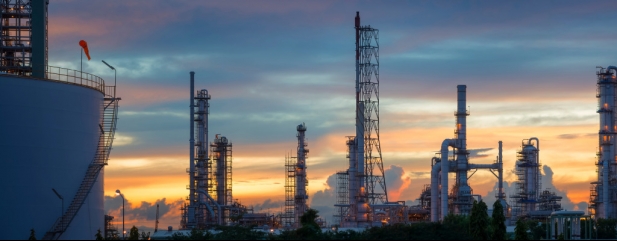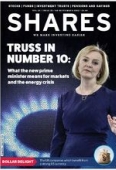Archived article
Please note that tax, investment, pension and ISA rules can change and the information and any views contained in this article may now be inaccurate.
The divergence between oil and gas prices and what it means

In all the debate about gas prices, the fate of the oil price has been somewhat overshadowed. You may have noticed at the forecourt that the cost of filling up has gone from mind-blowing to merely eye-watering and this roughly reflects what’s happened with the global oil market.
Brent crude, the international yardstick, has slipped from highs above $125 per barrel in the immediate aftermath of Russia’s invasion of Ukraine to less than $100 as we write.
The natural gas market has historically been closely associated with oil – although in the last decade or so the link between the two, in terms of pricing, has broken down.
The Brent crude oil price traded steadily at an average of nine times the US Henry Hub natural gas price between 2000 and 2009 but the ratio subsequently exploded. It peaked at more than 50-times as oil prices soared, and the development of shale gas led to a supply glut in the US.
A year ago, the ratio was around 18-times and currently the ratio stands at a little above 10-times reflecting a significant increase in the gas price relative to oil.
It is not surprising the relationship between the two commodities has broken down. Gas is predominately utilised in power generation; oil is instead largely refined into transportation fuel.
Gas is also literally a less liquid market than oil and, as a result, is also more localised. Much natural gas is still transported through pipelines and although technologies like LNG (liquefied natural gas), gas-to-liquids and compressed natural gas have made a difference, it is still more expensive and complicated to transport gas than oil.
So, while Henry Hub prices may have more than doubled in the last 12 months, in Europe prices have seen much larger increase. Arguably the US gas prices has been dragged higher by the situation in Europe as more of the relatively plentiful gas in North America is exported through LNG terminals.
Oil prices received a bump on 5 September when producers’ cartel OPEC and its affiliates agreed to cut production by 100,000 barrels of oil per day. However, don’t read too much into this decision. Consultancy Capital Economics says: ‘We maintain that both last month’s output increase and this month’s cut are little more than symbolic.
‘The bigger picture is that OPEC+ is producing well below its output target and this looks unlikely to change given that Angola and Nigeria, in particular, appear unable to return to pre-pandemic levels of production.’
Still, the supply issues with oil are not as acute as for gas and they serve different markets. This key difference between gas and oil, where one is more local and the other more international, could see gas prices continue to surge this winter while a downturn in the economy could prompt crude to drift lower.
Important information:
These articles are provided by Shares magazine which is published by AJ Bell Media, a part of AJ Bell. Shares is not written by AJ Bell.
Shares is provided for your general information and use and is not a personal recommendation to invest. It is not intended to be relied upon by you in making or not making any investment decisions. The investments referred to in these articles will not be suitable for all investors. If in doubt please seek appropriate independent financial advice.
Investors acting on the information in these articles do so at their own risk and AJ Bell Media and its staff do not accept liability for losses suffered by investors as a result of their investment decisions.
Issue contents
Ask Tom
Feature
Great Ideas
News
- Vistry fires starting gun on housebuilder M&A with £1.2 billion bid for Countryside
- UK investors pull a record £1.93 billion out of stock-based funds
- What new prime minister Liz Truss means for markets and energy prices
- ASOS shares slump as a briefing bombshell spooks the market
- Why China-focused Welkin offers investors something new as it plots $300 million float
 magazine
magazine








